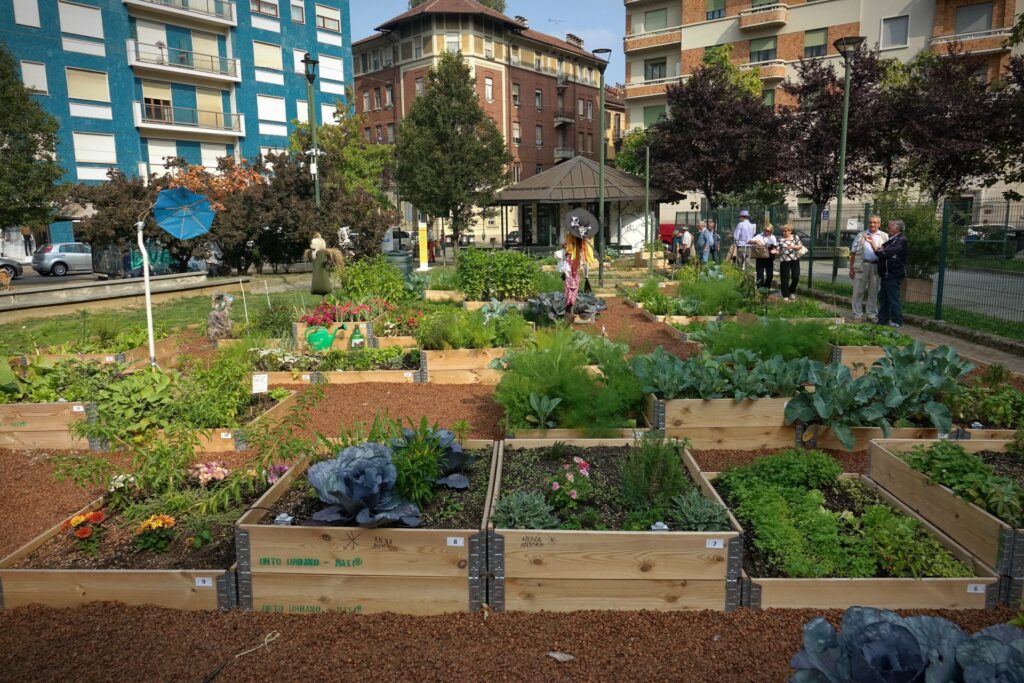The People’s Garden Movement Benefits People and Pollinators

As the prices of essential foods have increased substantially, more people are looking to provide for themselves and not be as dependent on grocers for produce. Add the growing public interest in the environment, and it is the perfect platform for The People’s Garden movement. This movement is designed to enable and empower people to produce their own food. What started in D.C., the United States Department of Agriculture continues to open land for community use to plant gardens, fruit trees, and grow raised beds. In areas that have limited outdoor space, this effort has proven to be a trending and valuable resource to the people. As the movement expands, both people and pollinators are experiencing the benefits.
The People’s Garden Movement is a collective effort that appears to be drawing in more and more interested groups. The result is a movement gaining momentum nationally and locally. The good news is – everyone benefits! People learn to produce their own food, green space is good for the air quality, and pollinators are having a hay day with all the new growth in unsuspecting areas.
Growing a Healthy Community for People and Pollinators
People
The People’s Garden movement is focused on funding communities interested in growing healthy, fresh food that allows local food systems to be resilient and sustainable. The movement is responsible for enlightening many about their ability to grow and nurture plants and flowers. The People’s Garden Movement has proven that anyone can grow their own food and enjoy the benefits of growing, nurturing, and eating their personal fruits and vegetables.
Pollinators
The natural habitats created due to The People’s Garden Movement organically provide ideal habitats for pollinators. Adding more gardens that are maintained multiply pollinator food sources, and in return, they thrive and contribute in their own way. The resources to design, build, and create a sustainable garden in metro areas without much green space bring pollinators to new locations, and bees are not picky about what city they are in.
Goals of The People’s Garden Movement
Goal #1: Uniting the Community
Greenspace is a way for neighbors and others in the community to gather and enjoy others with common interests. Not only do gardens provide beautification, but they are considered art and quite therapeutic for some. Art that welcomes wildlife and natural habitats that engage pollinators are beautiful ways to rebuild the depleting environmental health. Tree canopies provide shade, and the gardens create organic spaces for recreation and volunteer opportunities.
A purposeful element of The People’s Garden Movement is the local donation of food from any gardens on federal property to give back to the community from which it comes. The People’s Garden is creating a cycle of regeneration that feeds back to the health of the gardens and the community as it is maintained and enjoyed by more people.
Communities are designing rain barrels, composting, and bat and insect hotels while utilizing native plants to create an organic experience for the wildlife and pollinators. It is as if the people are stepping back for a more comprehensive picture, recognizing they have a direct role in the sustainability of our planet.
Goal #2: Collaboration
Collaboration between neighbors, co-workers, local food pantries, gardeners, conservationists, youth organizations, senior centers, and veteran groups can participate in The People’s Garden Movement. The design of the program has needs on various levels of involvement, so nobody is unable to participate and contribute. It truly is the bringing together of common interests and creating a more sustainable way of living for everybody involved. What is incredible is the variety of efforts that have stemmed from The People’s Garden movement.
Goal #3: Educating the Public
Knowledge is power. Learning sustainable ways of living is the wave of the future. As people come together, information is shared, and new ideas surface. The gardens are being used as educational opportunities, bringing awareness to what can be done locally to help globally. The People’s Garden Movement is bringing into classes, events, and informational websites to raise awareness.
Even local beekeepers are getting involved, building interest, and educating the public about the essential pollinators in the area. Planting native plants and bee-friendly flowers and trees benefit bees and other pollinators. If these gardens are lucky, bees may build a hive nearby, keeping the garden getting the attention it needs from insects, birds, and butterflies.
What Is In A Name?
President Abraham Lincoln in the inspiration behind naming The People’s Garden because he considered the USDA The People’s Department. In 2009, on Lincoln’s 200th birthday, the Agricultural Secretary started the first People’s Garden. Lincoln recognized the value of healthy soil and its function in our vital ecosystem to sustain plants, pollinators, animals, and people. Healthy soil and plentiful plants help provide clean air, diverse wildlife, breathtaking landscapes, and bountiful crops!
Approaching 13 years since its inception, the movement continues to gain momentum as government funding is available to small-scale farmers. Those interested in initiating a new urban farm can submit a business plan and receive land and capital. If not ready to venture out on your own, find a local people’s garden to get involved. With so many facets to the program, everyone has something to contribute!
